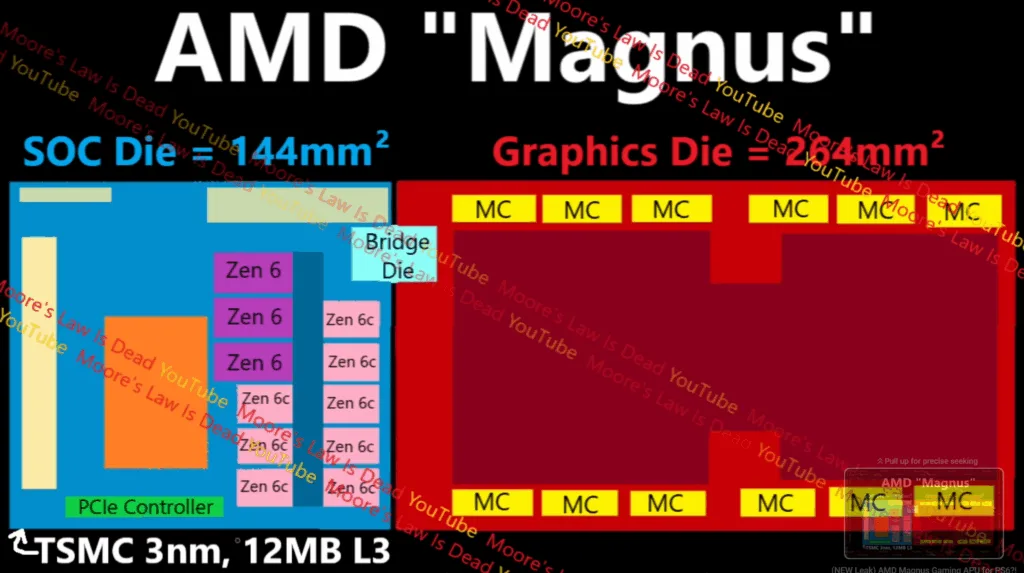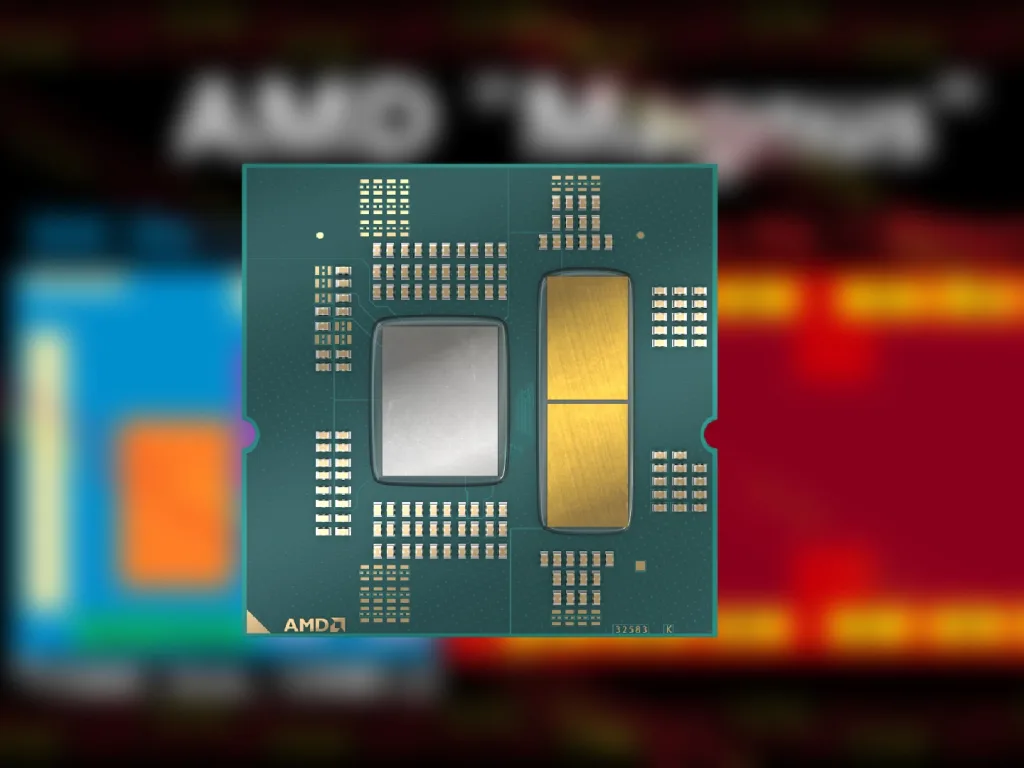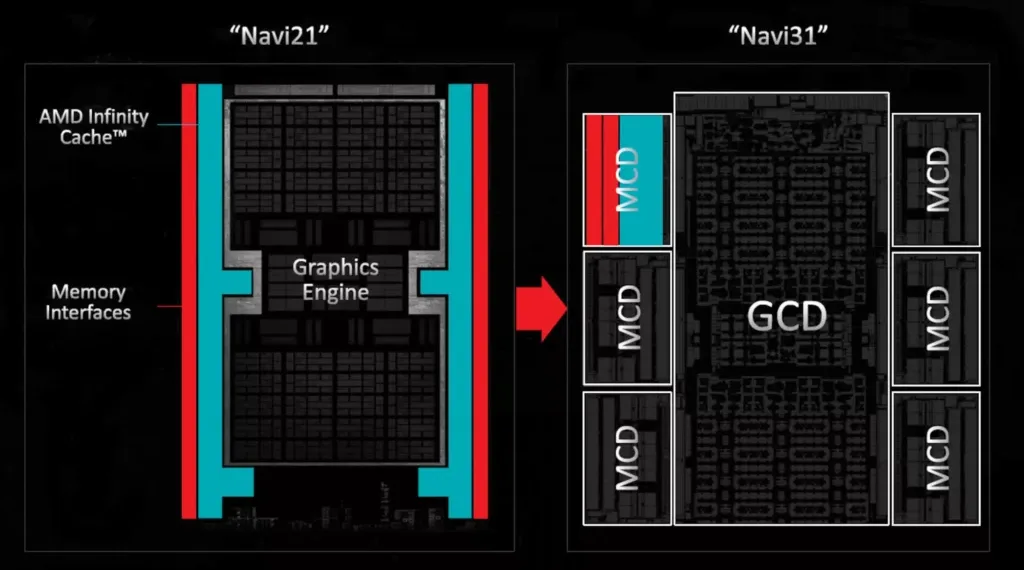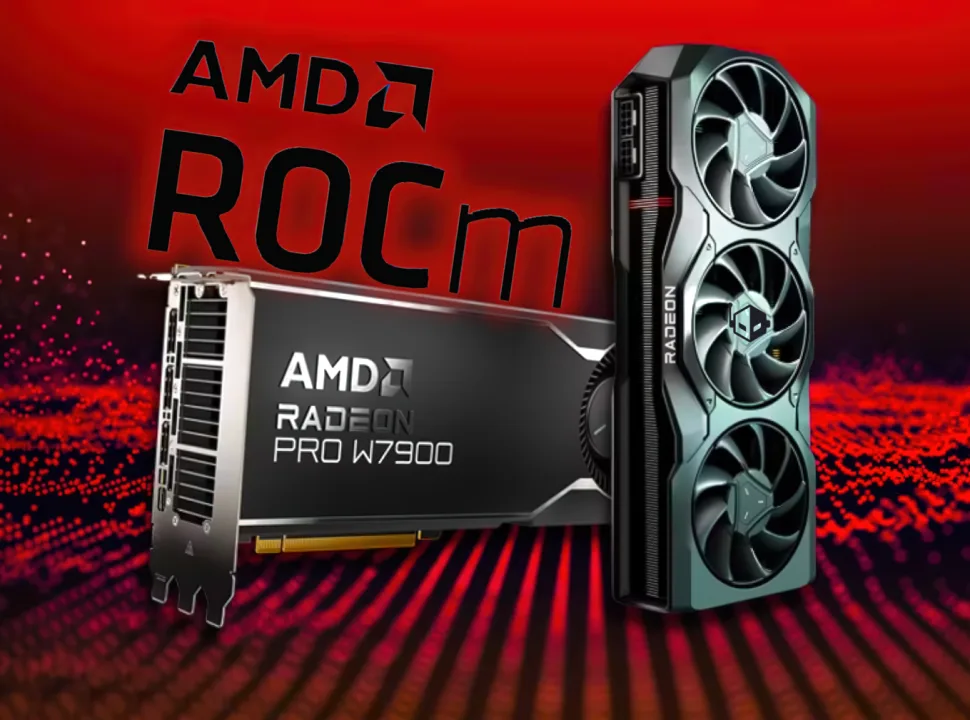Microsoft’s next-generation Xbox strategy is taking a dramatic turn with the leaked Magnus APU, a revolutionary AMD chiplet design that will power both traditional consoles and a new line of Xbox-branded PCs. This groundbreaking approach promises to reshape the gaming landscape while delivering massive benefits to AMD.
Table of Contents
Breaking the Console Mold
According to industry insiders on NeoGAF, including known AMD leaker Kepler L2, the Magnus APU represents Microsoft’s boldest hardware strategy yet. Unlike traditional console APUs, Magnus employs a chiplet architecture with separate CPU and GPU dies connected via a high-speed bridge, enabling unprecedented flexibility.
Magnus APU Technical Specifications
| Component | Specification | Performance Target |
|---|---|---|
| CPU | 11-core Zen 6 (3+8 Zen 6c) | Advanced multi-threaded performance |
| GPU | 68 RDNA 5 CUs, 192-bit bus | 4K120 gaming, RTX 4080-4090 class |
| Memory | GDDR7 on 192-bit bus | Up to 864 GB/s bandwidth |
| Launch Window | Late 2026 – 2027 | Next-generation console cycle |

Game-Changing Market Strategy
Microsoft’s approach fundamentally alters the console competition landscape. Rather than battling Sony’s PlayStation 6 directly, Xbox will compete with pre-built gaming PCs across multiple price points, leveraging the Magnus APU’s scalable design.
HeisenbergFX4, another respected industry insider, suggests this strategy eliminates special console development requirements, as games will essentially run on PC-like hardware configurations from the start.
AMD’s Strategic Windfall
This partnership represents a massive opportunity for AMD. By licensing Magnus to OEM partners for Xbox-branded PCs, AMD gains:
- Higher production volumes leading to better TSMC pricing
- Shared optimization work between console and PC platforms
- Enhanced market positioning against Intel and NVIDIA
- Reduced development costs through chiplet modularity
As highlighted by Moore’s Law is Dead, the unified approach could solve PC gaming’s optimization challenges while expanding Xbox’s ecosystem reach.

Flexible Hardware Philosophy
The Magnus design enables Microsoft to pursue a more iterative console approach, potentially shortening upgrade cycles from 7-8 years to 2-3 years—similar to PC hardware refresh rates. This chiplet flexibility allows swapping components for different performance tiers without complete redesigns.
For comprehensive gaming hardware analysis and console comparisons, explore our next-gen console coverage and AMD vs Intel gaming performance.
Bottom Line
The Magnus APU signals Microsoft’s evolution from console manufacturer to gaming ecosystem architect. By blurring lines between consoles and PCs, Xbox positions itself for broader market competition while offering AMD unprecedented scale and optimization opportunities in the gaming space.








